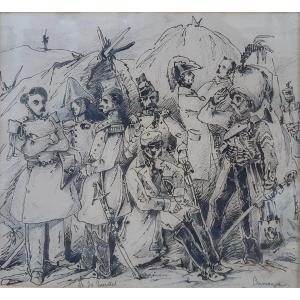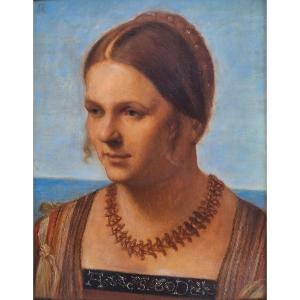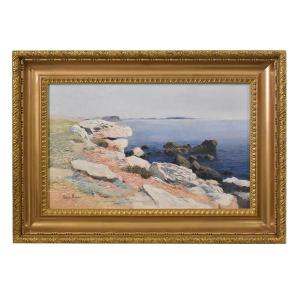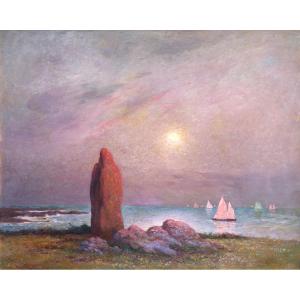Visible at the gallery
Initially a student at the Ecole des Beaux-Arts in Lyon in 1860, Léon Couturier continued his training in Paris in 1864 in the studio of the academic painter Alexandre Cabanel. Marked by his participation in the war of 1870, he decided from the 1880s to devote himself to the representation of military ships and the life of sailors. Appointed official painter of the navy in 1890, he was decorated with the Legion of Honor in 1897. He regularly exhibited his paintings at the Salon des Artistes Français. Many of Couturier's paintings on the French navy are in the Musée National de la Marine in Paris. Here we have a particularly successful painting by Couturier representing a naval battle scene. The painter was able to render the event in a very realistic way with lots of movement and with a real sense of drama – we are really at the heart of the action here!
t could be describing the fate of the four French warships (with dark blue war flames with a cross as flags?) during the sad day of March 18, 1915 during the Battle of the Dardanelles. Vice-Admiral Carden had an armada of 18 battleships, four of which were French: the Suffren. the Bouvet, the Gaulois, the Charlemagne, under the orders of Commodore Guépratte. But they felt into a minefield. First the Bouvet was gutted by a drifting mine during the turning maneuver. It capsizes and sinks very quickly (the sinking ship in the foreground of the painting?). The Suffren, despite a significant leak caused by a shell, managed to escape from the strait. The Gaulois, seriously damaged by Turkish fire on the waterline, ran aground at the exit of the strait on the island of Drepano. The Charlemagne is one of the rare buildings to survive.








































 Le Magazine de PROANTIC
Le Magazine de PROANTIC TRÉSORS Magazine
TRÉSORS Magazine Rivista Artiquariato
Rivista Artiquariato